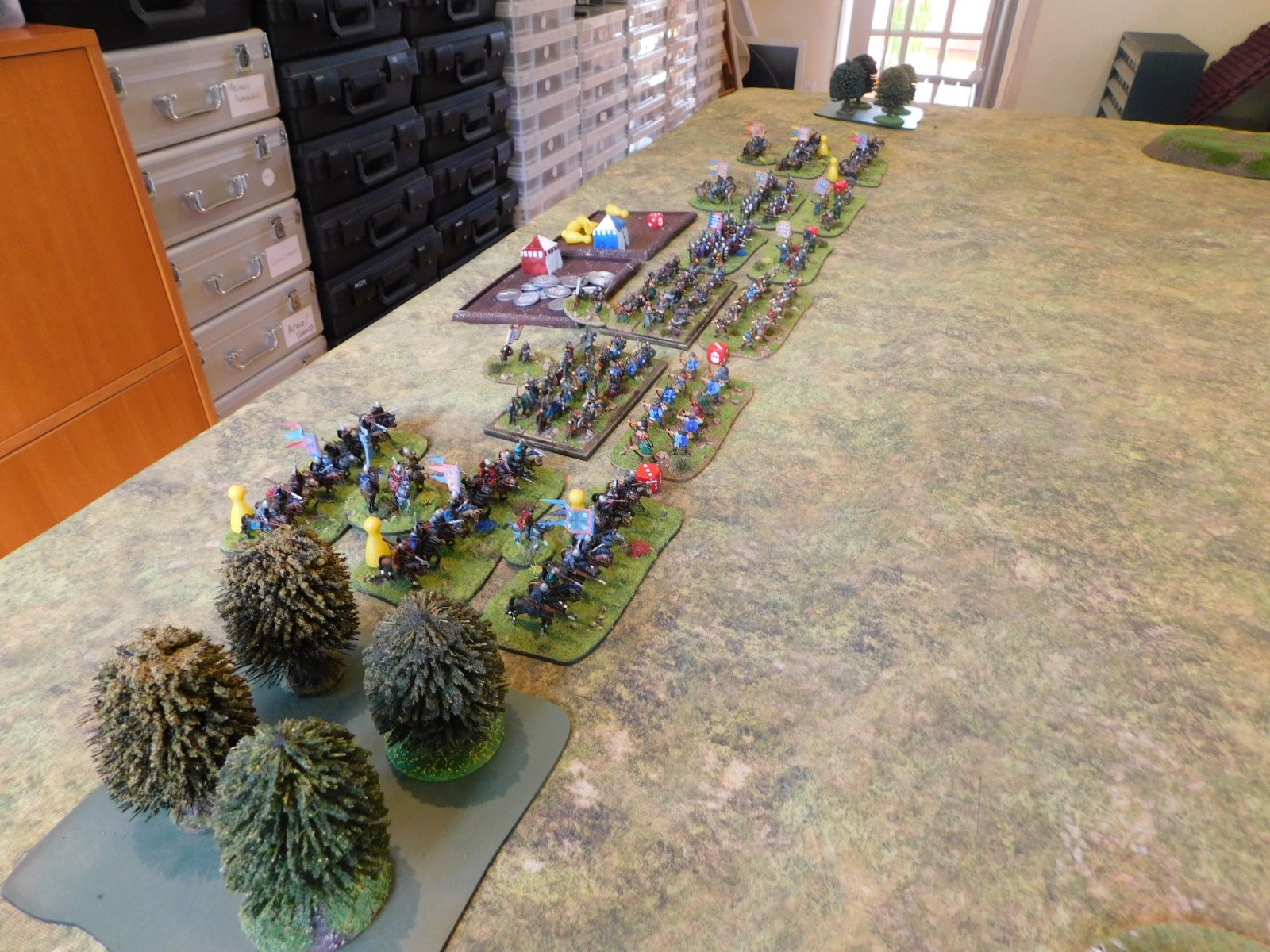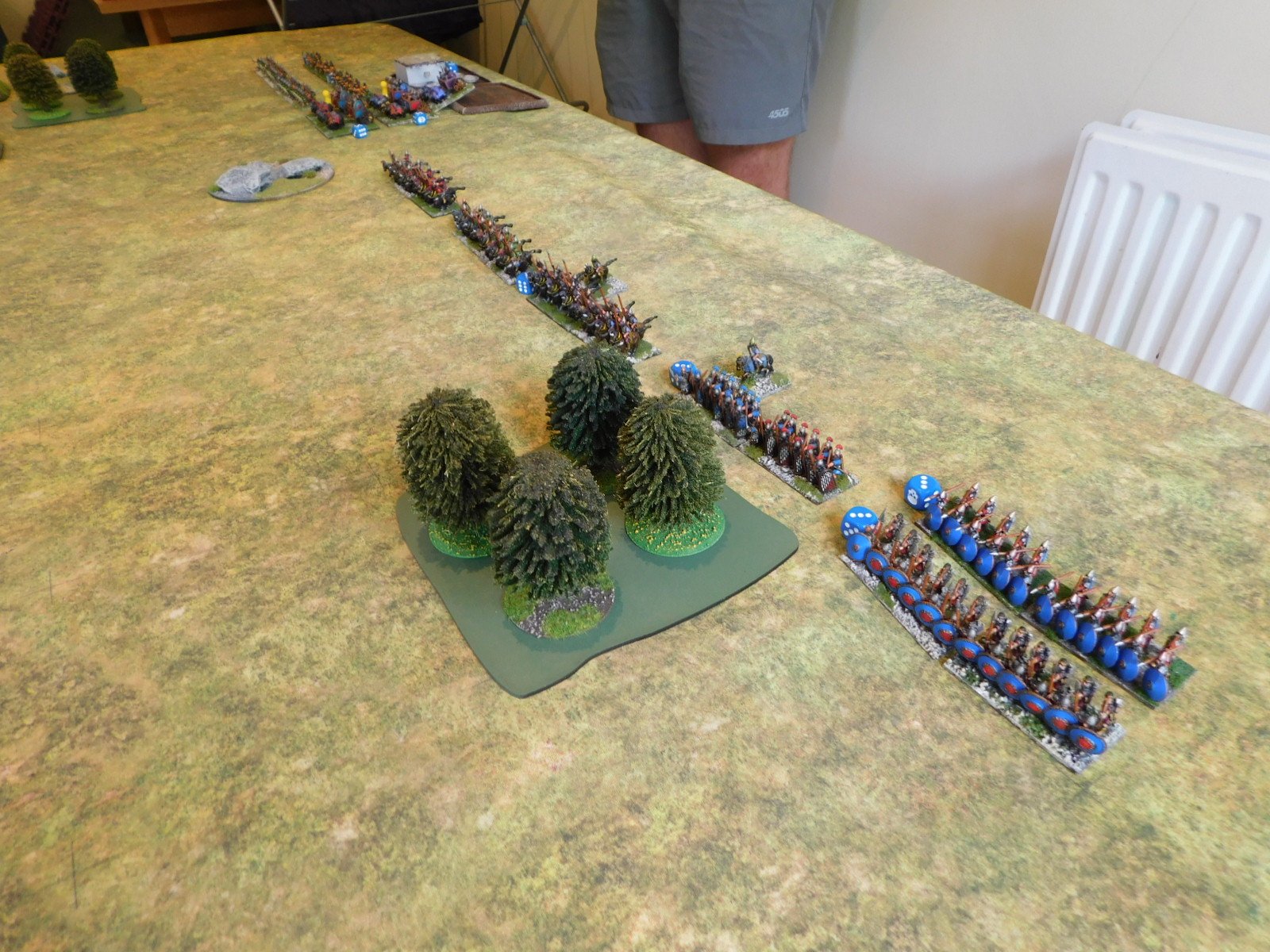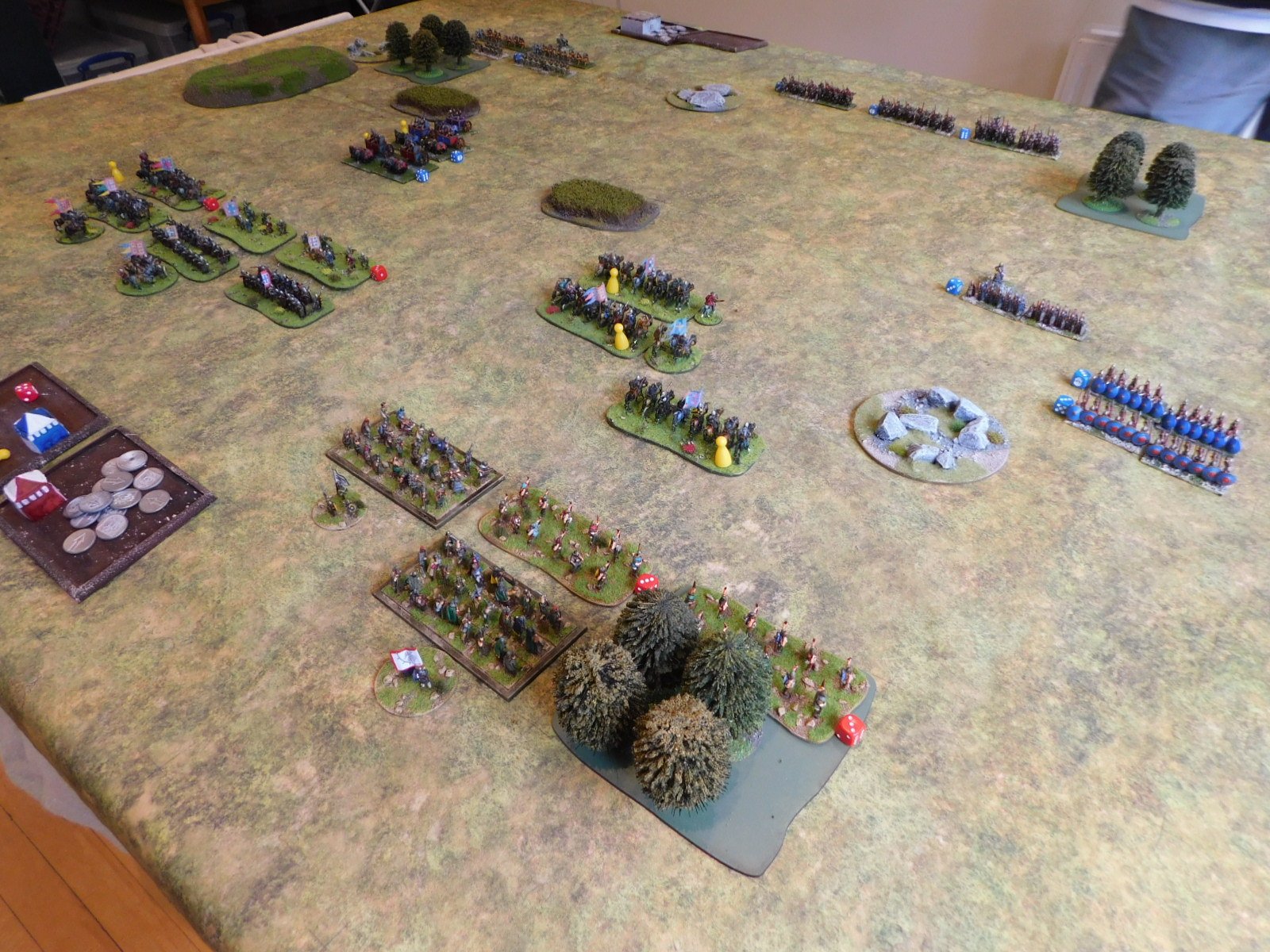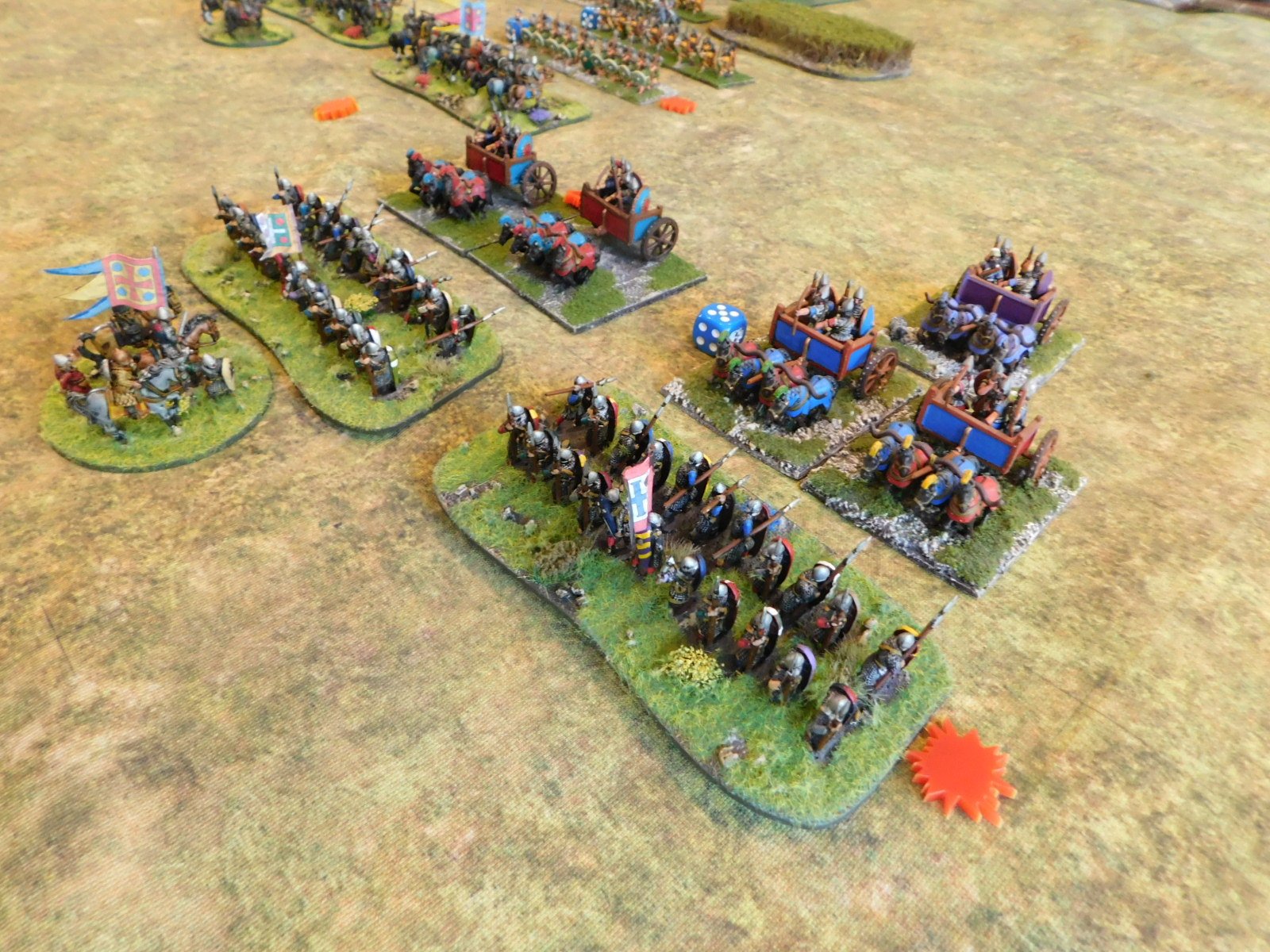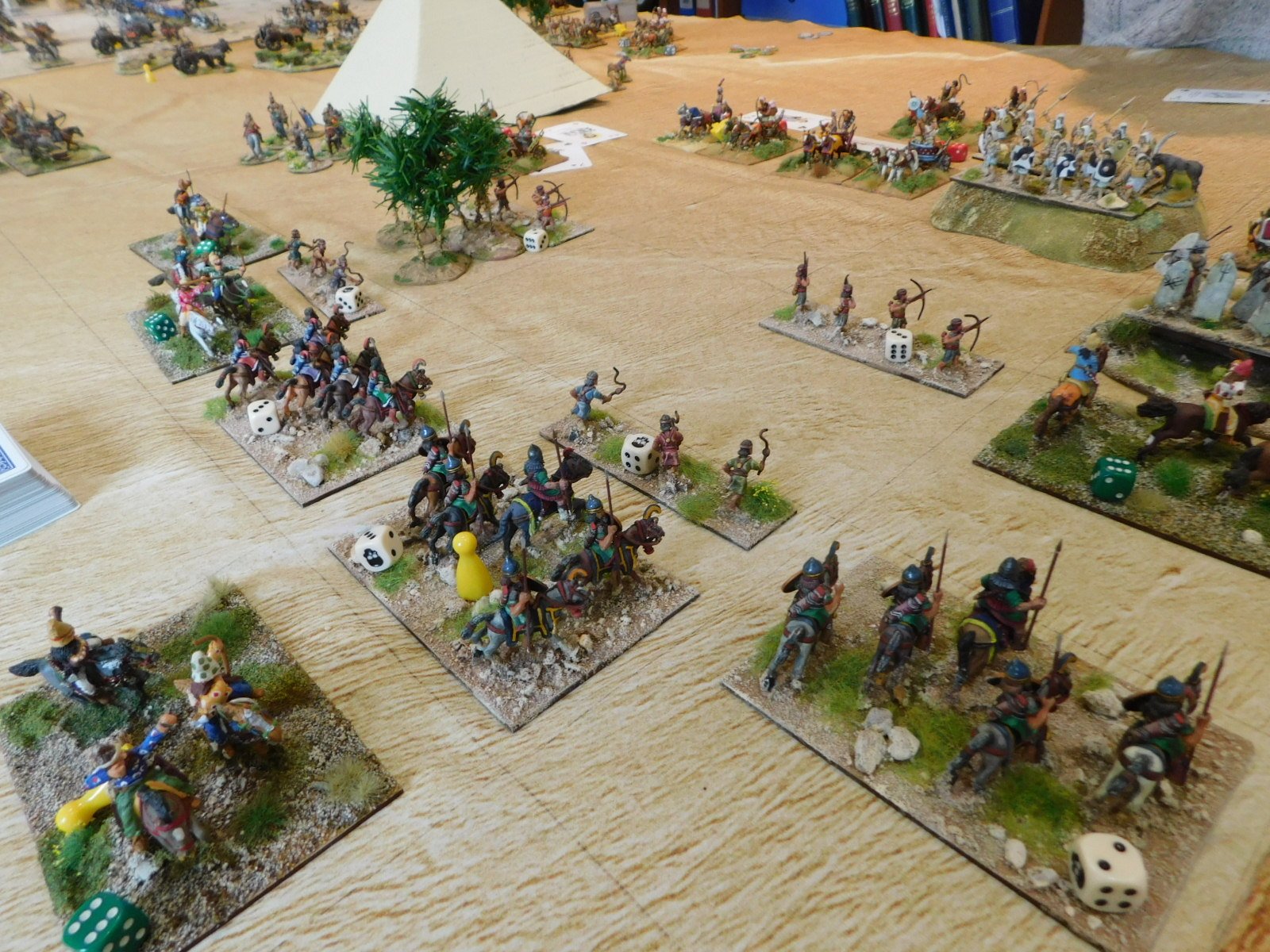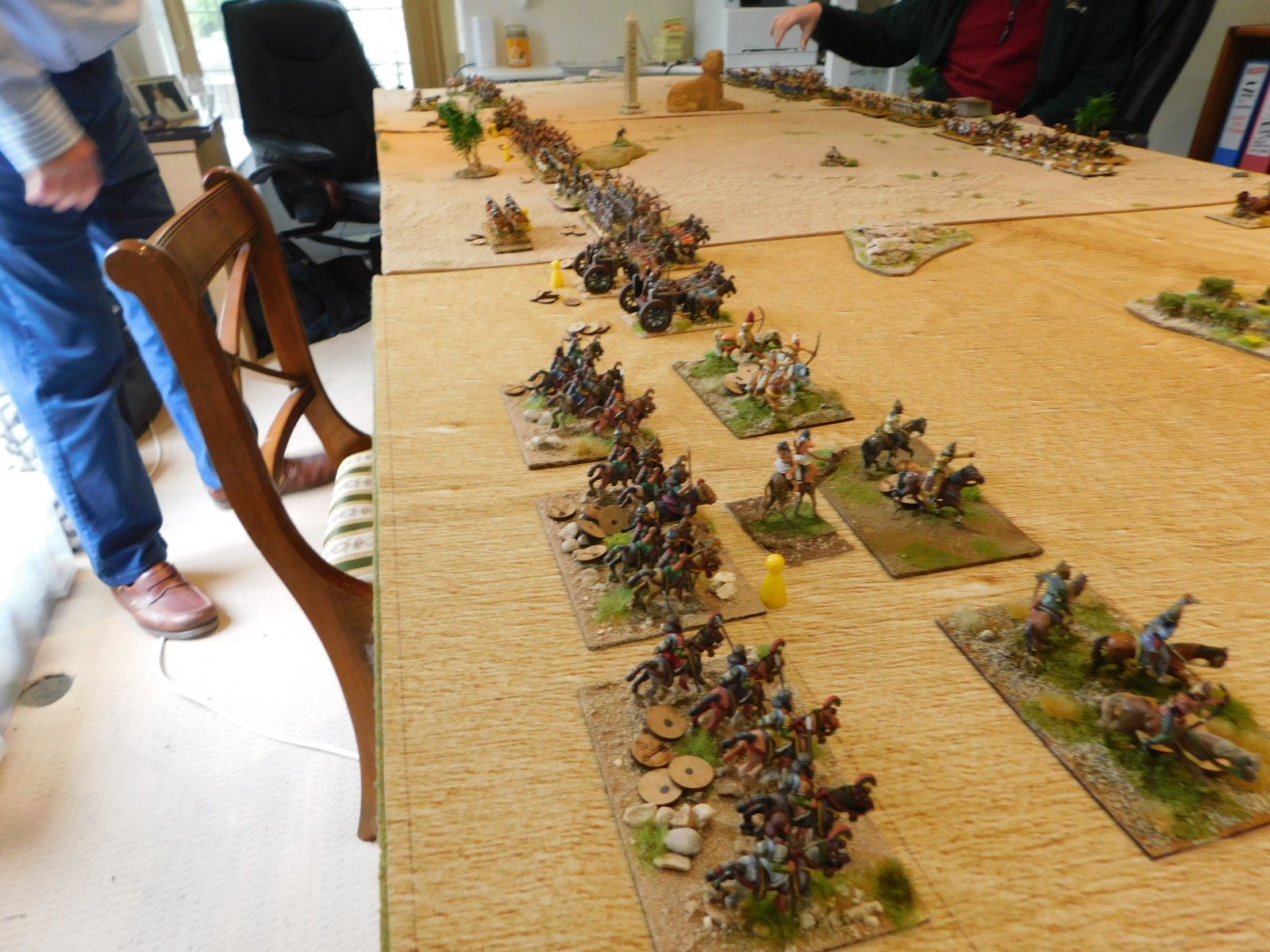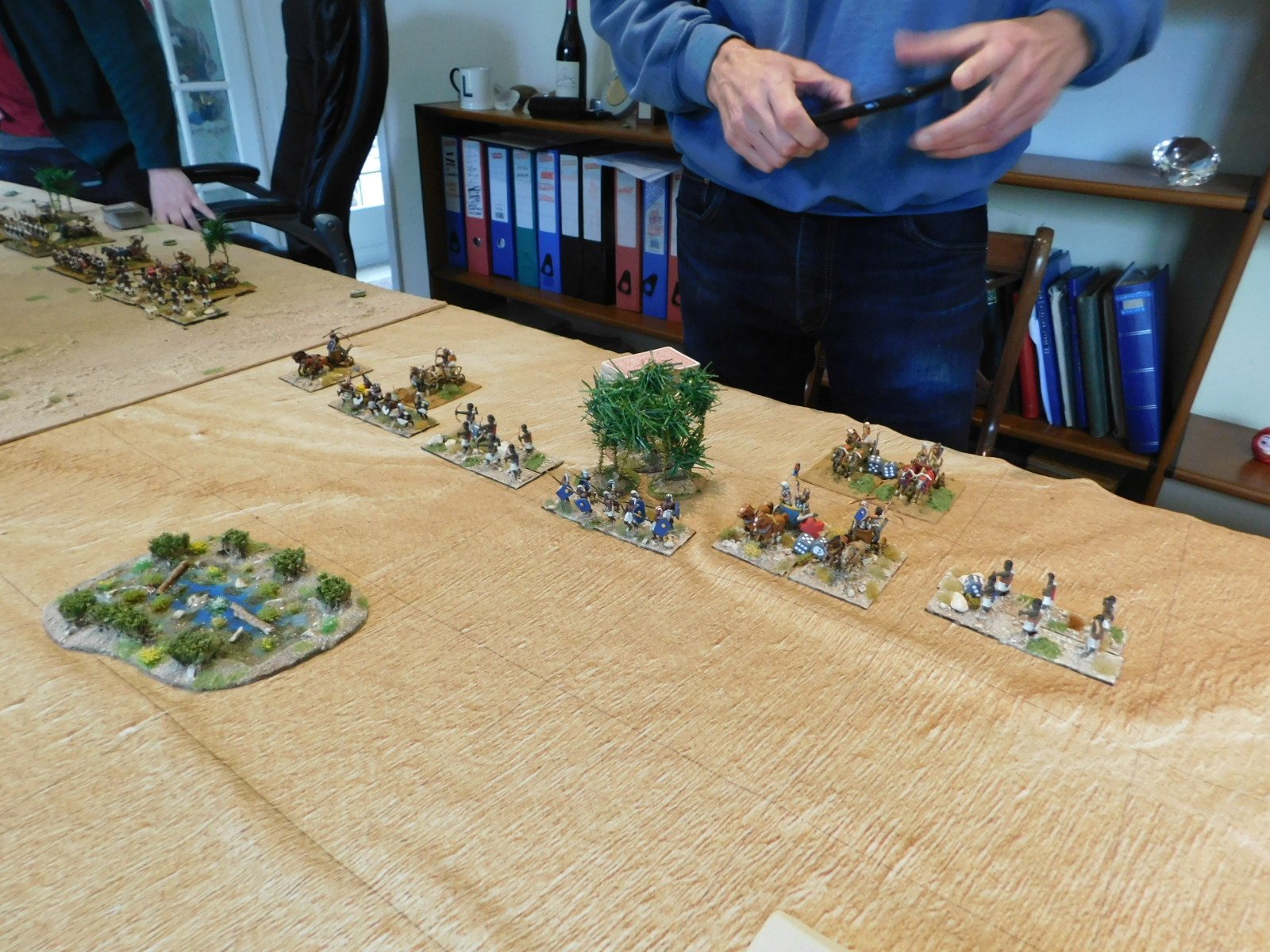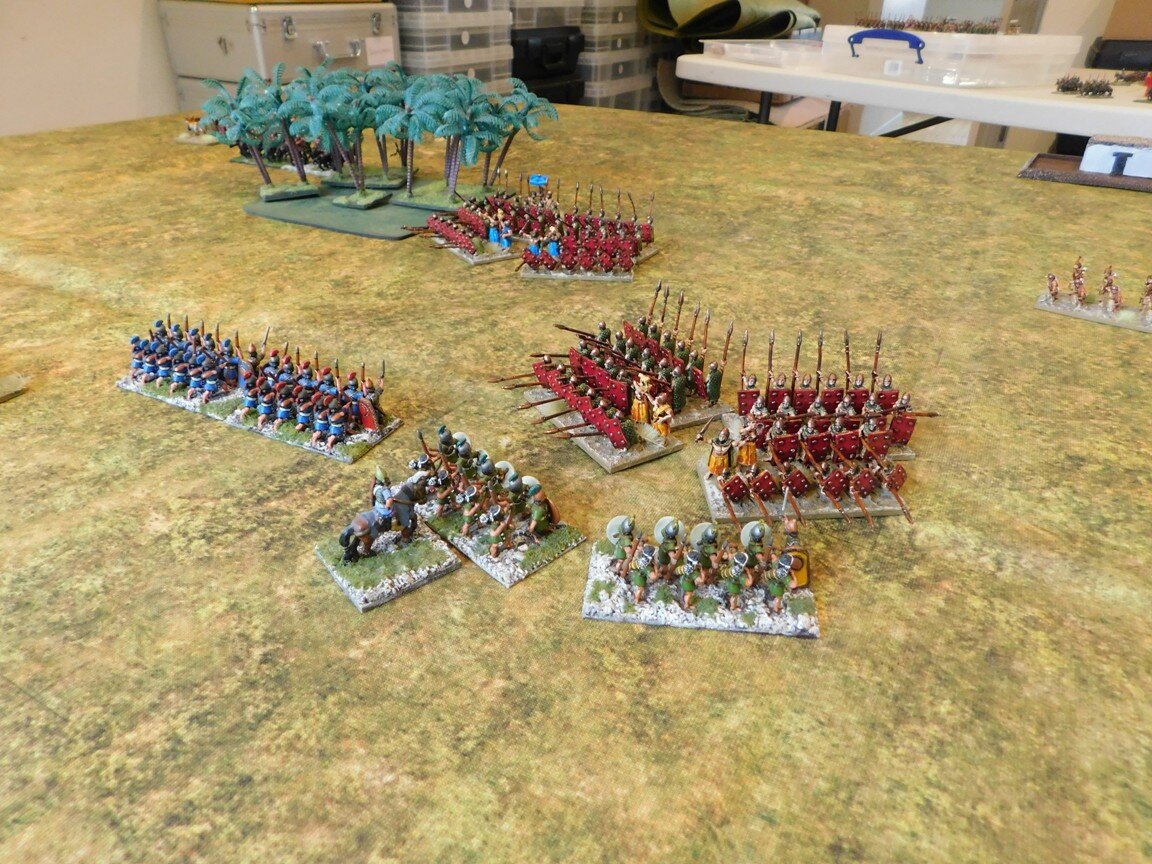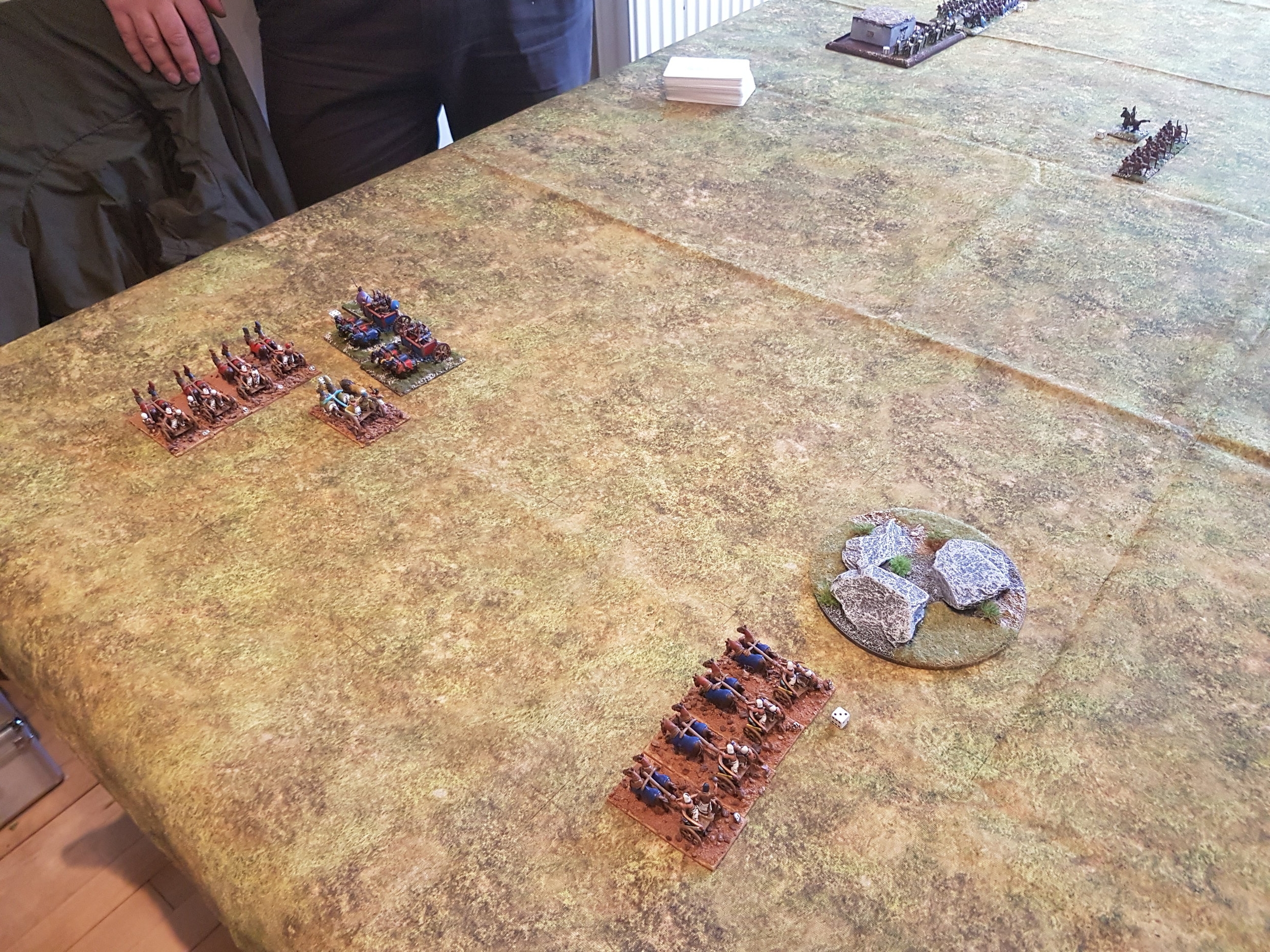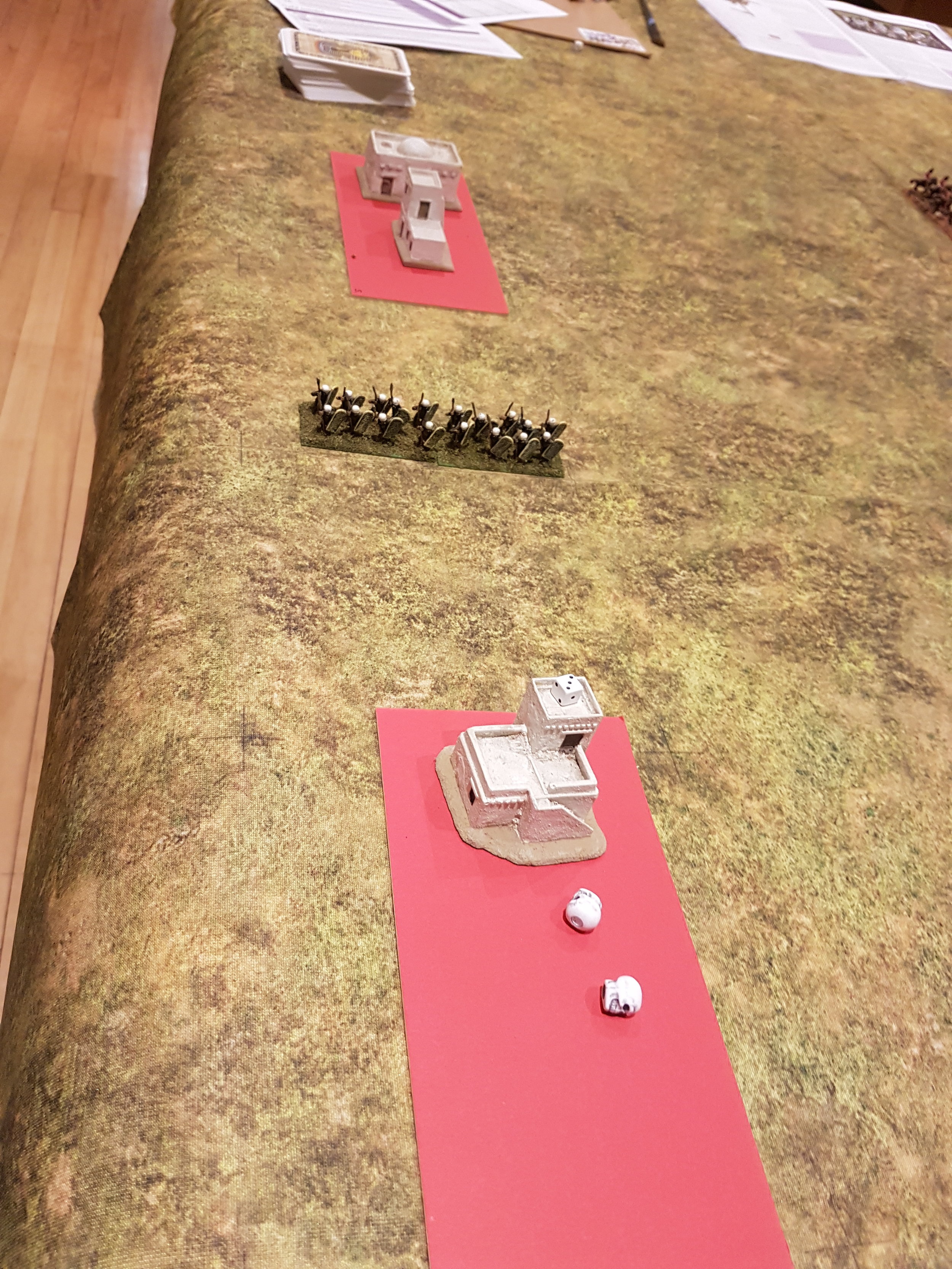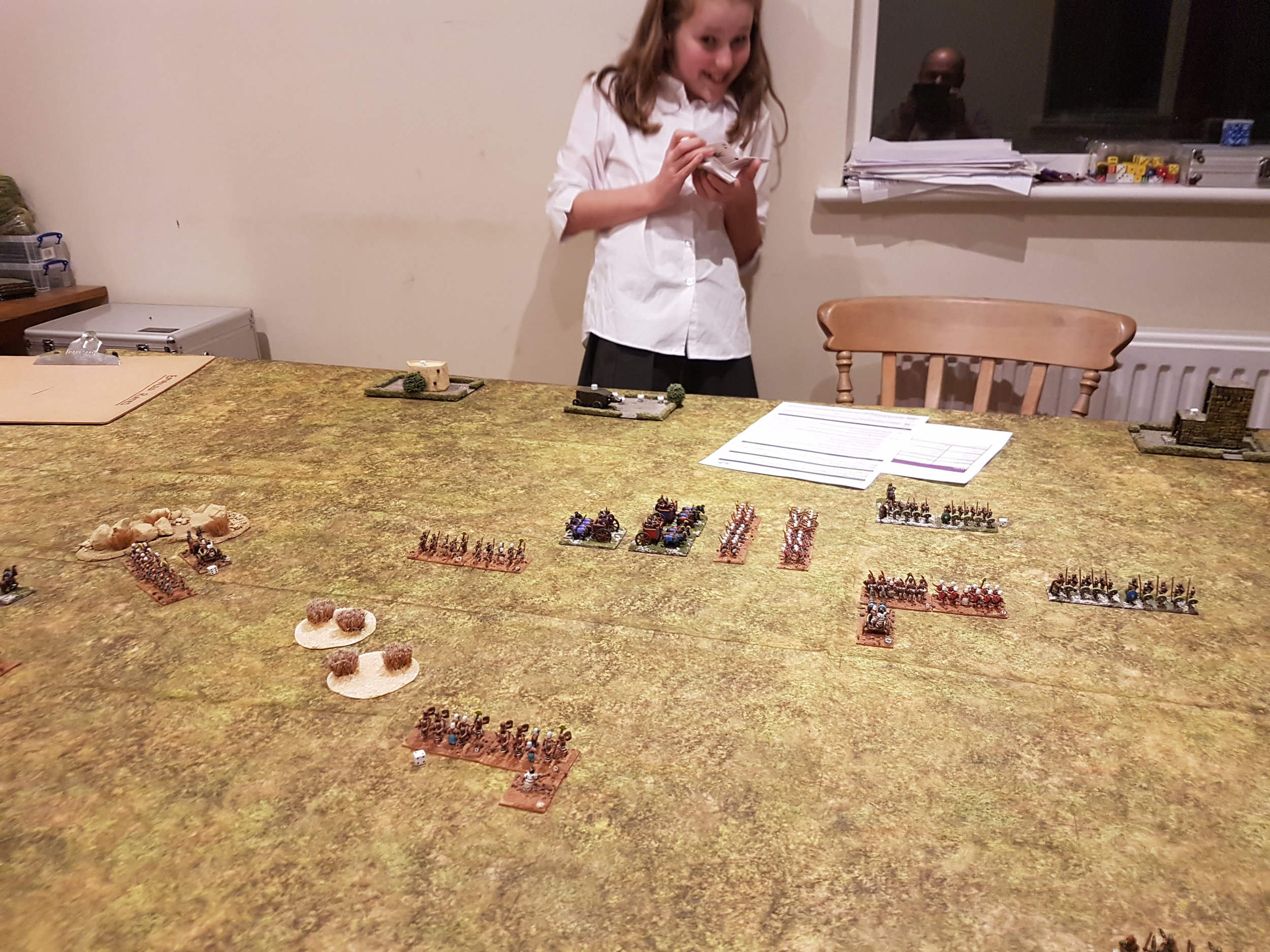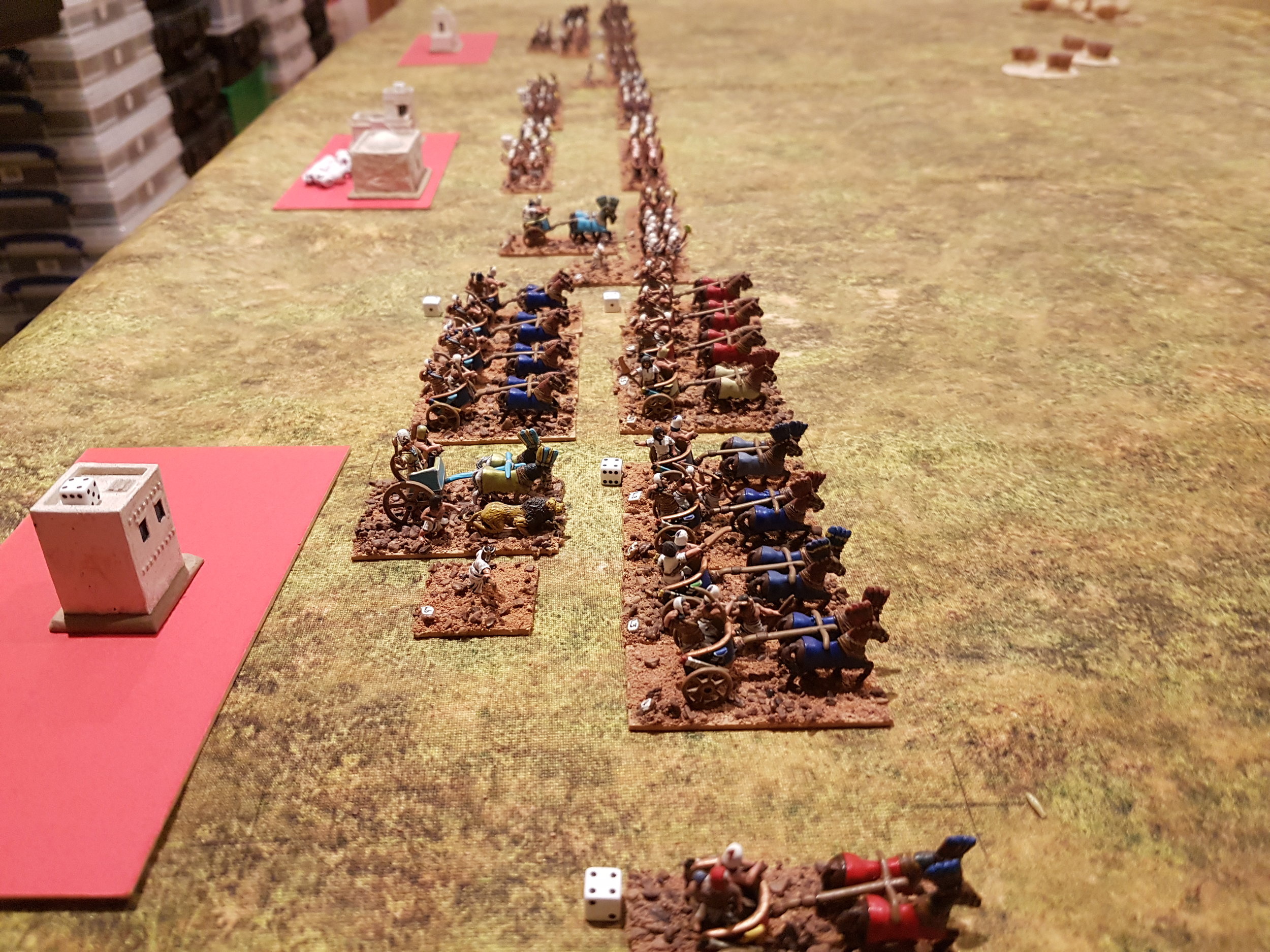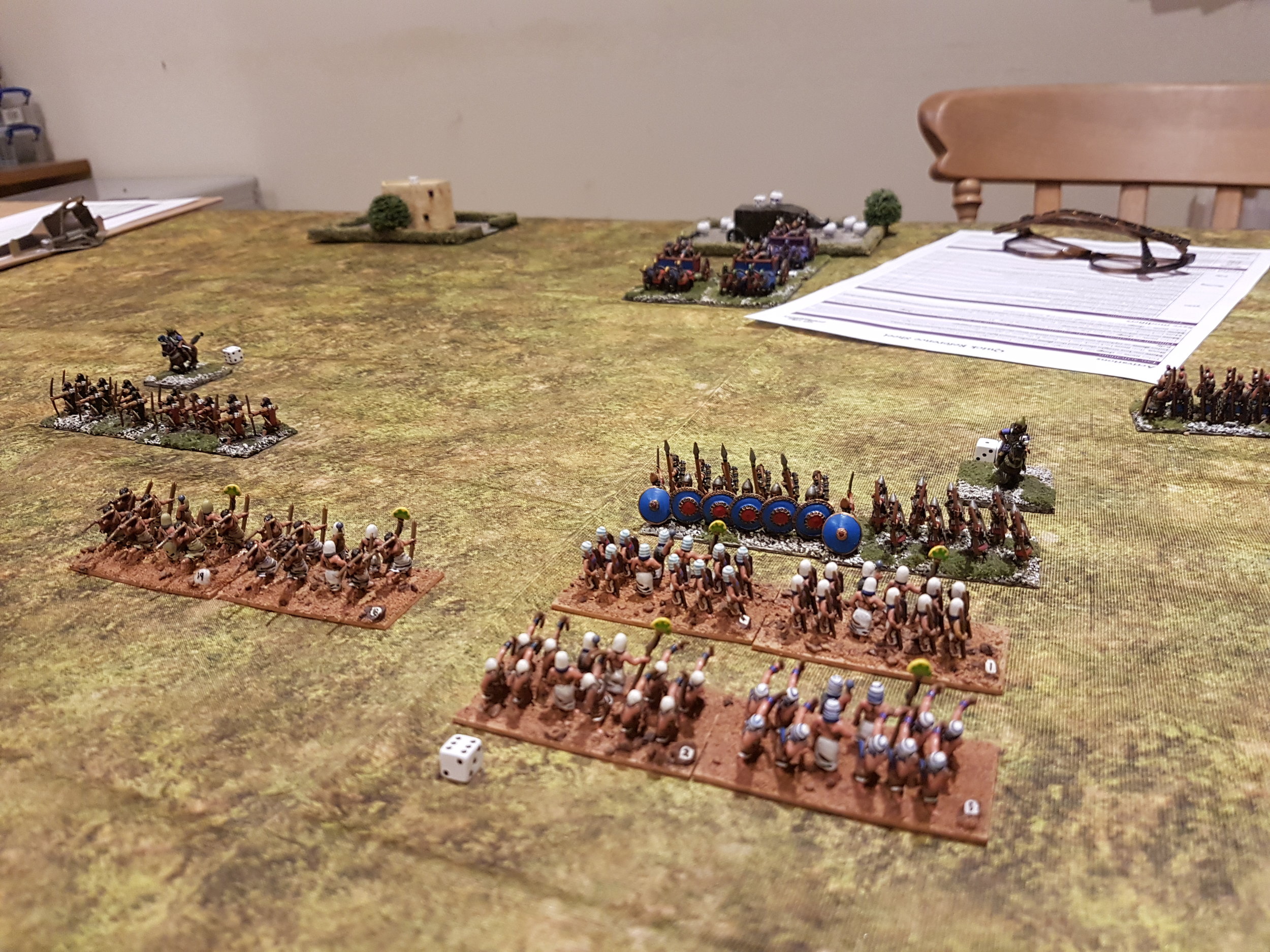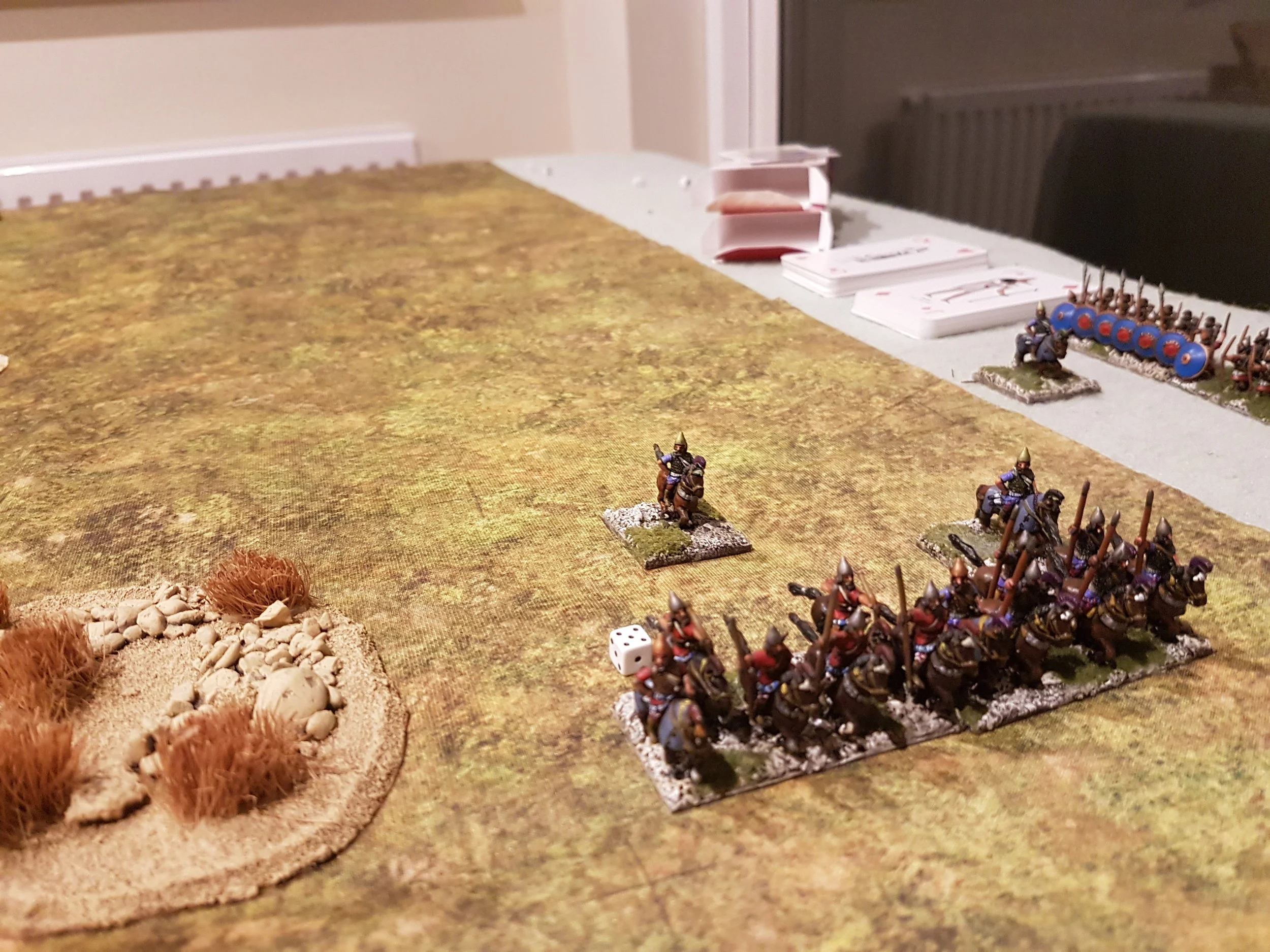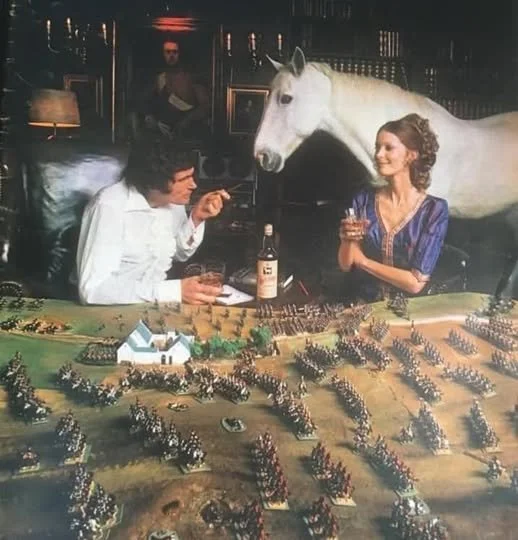TTS AAR: Hittites versus Neo-Assyrians
/Great to get a game of To The Strongest in with friend Bevan. We went biblical, with Bevan using the Neo-Assyrians versus my Hittites.
Neither side wasted any time, both thundering towards the other…apart from one Assyrian infantry command on the flank that really didn’t want to be involved.
Note the Assyrian infantry peaking into the frame from the left hand side
Whilst the Syrian light chariots kept some of the finally-advancing Assyrian infantry on the left occupied, the left hand command of Hittite heavy chariots smashed into the rest of the left-hand Assyrian infantry and the Assyrian heavy chariots in the centre of the enemy line.
Amazingly (good cards!) the Hittite chariots smashed through both one unit of enemy infantry and one set of Assyrian chariots, punching a huge hole in the centre of the Assyrian line.
Breakthrough at the schwerepunkt!
The other unit of Assyrian Heavy Chariots would also soon be sent flying off table, along with the Assyrian commander-in-chief.
Meanwhile, on the other flank, the other Hittite heavy chariot command had slammed into the Assyrian heavy cavalry, and a fierce melee broke out.
New tech versus old tech on the right
Keeping that flank locked safe was vital to the Hittite cause, as their infantry and more chariots in the centre had fallen victim to a deluge of Assyrian bowfire, and were wavering as the Assyrians closed for combat!
Hittites suffering a nasty attack of the missile fire!
Fortunately the chariots rallied and the Hittite Royal Guard were able to intervene to protect the wavering infantry. Note the Gasgan tribesmen on the left also seeking to get into the action.
Royal Guard to the rescue
Meanwhile, back to the left flank, where the Syrians were still keeping the Assyrian javelinmen occupied.
Back t he right again, where even the Royal Guard had been forced backwards onto a hill. If the Assyrians got their act together and advanced their heavy infantry, the Hittie centre could collapse…especially as the rest of the Hittite chariots were losing the melee on the far right.
Things getting a bit critical on the right!
All the above, however, was just a distraction from the main event: the victorious Hittite chariots left/centre continuing their punch forward to take the Assyrian camp, already packed with the survivors/fleeing infantry/broken chariots of the initial clashes.
Although the first lot of chariots were resoundingly unsuccessful in their attempt to get into the camp, the Hittite chariot commander, briefly delayed by the need to wipe out the other Assyrian heavy chariots, soon arrived to seal the win for the Hittites: taking both their camp and their last few coins.
It had been a very exciting game.
The Hittites had had fantastic early success against the Assyrian heavy chariots, punching right through them, but the Assyrians had responded quickly, taking advantage of their extra strength on the right to put so much pressure on the Hittite line that it almsot buckled. If it hadn’t been for the Hittite Royal Guard intervening at the critical moment, the entire Hittite line could have routed.
Kudos also to the Syrian light chariots on the left. Their skirmishing prevented the Assyrian javelnmen from either rushing back to defend their camp or from intervening in the centre.
This allowed the Hittite chariots in the centre/left, the ones who had broken through, to take the Assyrian camp and thus rip the heart out of the remaining near-victorious army, forcing their retreat and giving the Hittites a win.

















